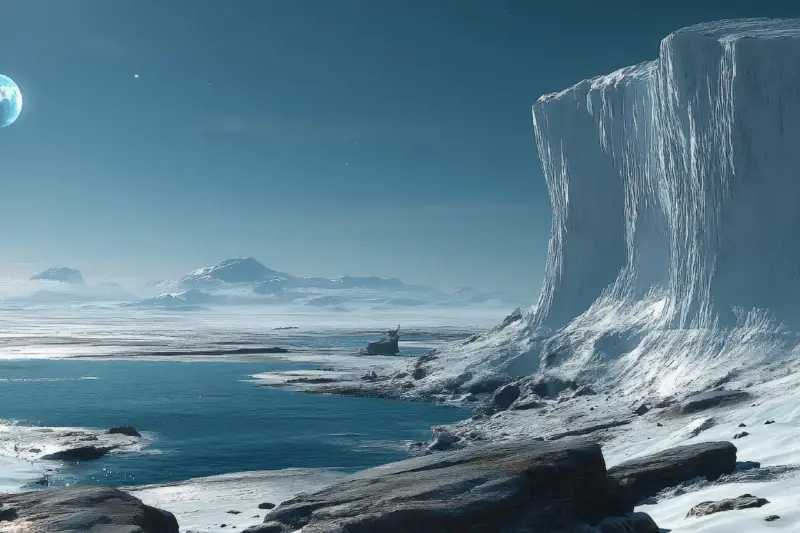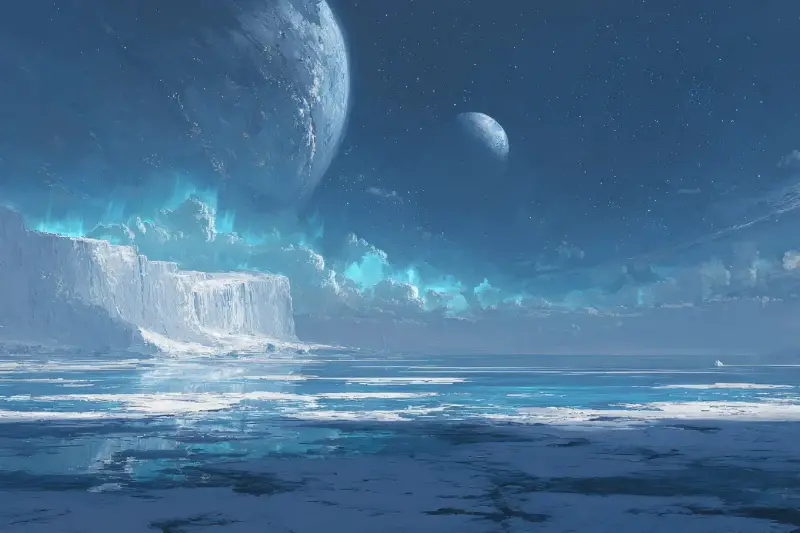The Hunt for Hidden Oceans in Our Galactic Neighbourhood

In a shimmering cosmos where glittering stars outshine planets, one element quietly claims centre stage in the search for life: water. More specifically, the discovery of icy water lurking around planets far beyond our solar system is causing a stir among astronomers and astrobiologists alike. Recent findings suggest that the Milky Way may be teeming with reservoirs of frozen water—raising thrilling questions about life’s potential far from Earth.
Surprises Beneath the Surface: Where Icy Water Hides
While Earth’s sparkling blue oceans are visible from space, the search for water elsewhere requires sharper tools. Thanks to groundbreaking advances in space telescopes, scientists have now pinpointed icy water not only in the rings and moons of familiar neighbours like Saturn and Jupiter but increasingly around exoplanets—planets orbiting distant suns.
What’s truly remarkable is the diversity of these environments:
- Enceladus and Europa, moons orbiting Saturn and Jupiter, boast vast subsurface oceans hidden beneath crusty shells of ice.
- Pluto and other dwarf planets feature frosty landscapes sprinkled with nitrogen and water ice.
- New evidence from the James Webb Space Telescope points to water-rich atmospheres on super-Earths orbiting distant stars.
Each discovery draws us closer to unravelling the secrets of cosmic water and the possibility of life beyond our pale blue dot.
Icy Water: Key Ingredient for Life’s Recipe
Why does the presence of ice matter so much to scientists? On Earth, where water flows, life follows—from humid jungles to the crushing depths of the Antarctic ice. The logic follows that, even in its frozen form, water could serve as the cradle for microbial life in otherworldly conditions.
Intriguingly, studies suggest that icy mantles may:
- Protect organic molecules from deadly cosmic radiation.
- Store vital energy and nutrients for millennia, creating stable environments essential for life’s slow beginnings.
- Melt intermittently due to tidal or volcanic heating, providing transient pockets where life might spark.
This threefold potential positions icy water as one of the most promising markers for habitable zones across the galaxy.
Tools of Discovery: How Do We Find Alien Ice?
Peering into the cosmic abyss isn’t simple, but today’s technology makes the invisible visible. Scientists use an enchanting mix of strategies to seek out icy water worlds:
- Spectroscopy: By analysing the colour and absorption patterns of starlight passing through planetary atmospheres, researchers detect the fingerprints of water molecules.
- Thermal Imaging: Infrared observations reveal temperature variations pointing to ice beneath surfaces or within atmospheres.
- Gravitational Tugs and Wobbles: The motion of planets affected by massive, hidden oceans can betray a watery secret lurking below their crust.
The thrill of detection keeps astronomers scanning the skies, hoping each new signal holds the whisper of another hidden sea.

A Cosmic Jigsaw: What Does This Mean for Us?
Piecing together the puzzle of water’s ubiquity, each discovery adds a fresh tile to the matrix of habitable worlds. As our galactic map grows, so does our understanding:
- Some estimate that a quarter of exoplanets in the Milky Way may host significant amounts of water.
- Many of those planets orbit within their star’s “Goldilocks zone”—not too hot, not too cold, ideal for retaining liquid water.
The evidence is mounting—we may not be as alone as we once thought.
The Universe: Icy, Alive—and Waiting?
As icy water continues to emerge as a universal thread across planetary systems, one cannot help but wonder: are silent oceans on distant moons or steamy atmospheres around far-off planets home to life, or even complex ecosystems? Our story with water is a shared cosmic heritage, one we’re only beginning to decipher. The next time you gaze into the night sky, consider that icy worlds may be quietly shaping destinies—and perhaps, preparing to welcome our curiosity with secrets still glistening in the dark.
